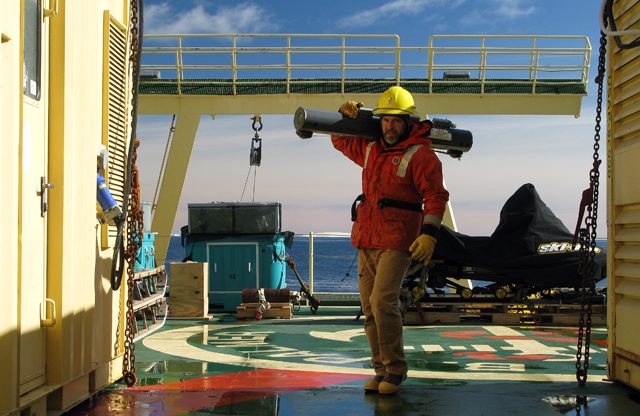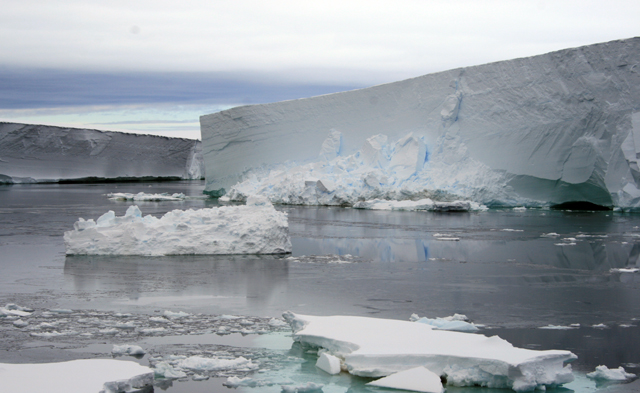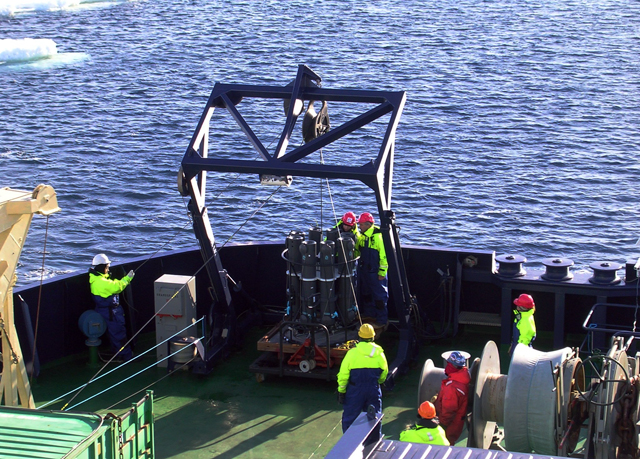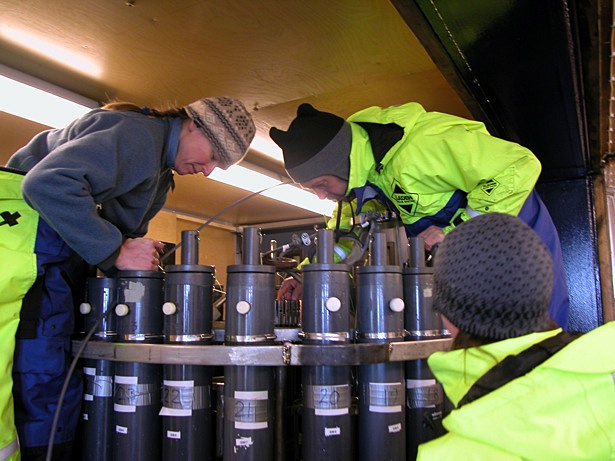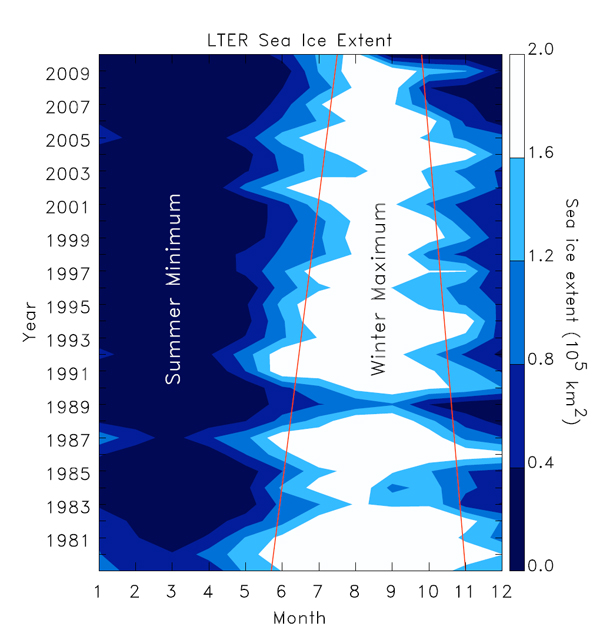Page 2/2 - Posted December 2, 2010
Polynyas are important sink for carbonIs the meltwater releasing nutrients, including trace metals like iron, into the near-shore environment? Or is the iron coming from somewhere else? Is it even the iron that’s driving the increased productivity? To help answer those questions, the USAP recently acquired a new state-of-the-art trace metal system with a National Science Foundation (NSF) The system helps ensure any trace metal samples collected by a conductivity, temperature and depth (CTD) sensor and rosette “This system makes it possible for us, and for other trace metal investigators, to sample seawater at any depth down to about 3,000 [meters] without contamination of the samples by the equipment, as would happen for at least some important metals if we used the ship’s conventional CTD,” Sherrell said by e-mail as the system was being installed in Punta Arenas. “We’re excited to see the system work correctly, both mechanically, and in terms of returning clean samples. Iron is one of the most contamination-prone metals,” he added. Another key goal of the project is to figure out what occurs post-bloom. Phytoplankton are important to the carbon cycle “When that [carbon] sinks, it’s gone for a while,” Yager said. The timeframe in this case is at least centuries. Scientists believe the polynya’s intense productivity will be matched by high level of carbon export to ocean depth. In addition to measuring the drawdown of CO2 at the surface, the ship will deploy a sediment trap attached to a mooring to capture the organic carbon particles as they settle from the surface to the bottom of the ocean. The mooring will sit on the ocean floor at about a depth of a thousand meters for a year. Many of the measurements and techniques the scientists use will mirror those of the Palmer Long Term Ecological Research (PAL LTER) project For example, they will release a glider — a winged, torpedo-shaped robot that moves autonomously through the water — to take physical oceanographic measurements like temperature and salinity in the polynya. Oscar Schofield The western Antarctic Peninsula is one of the fastest warming regions on the planet, with average temperatures increasing nearly 3 degrees Celsius since the 1950s — and even more in the winter. Additionally, the winter sea ice duration in an area stretching from the west Antarctic Peninsula to the eastern Amundsen Sea is in decline. Data between 1979 and 2006 show sea ice advancing later and retreating earlier. In the greater PAL LTER study area, the life of winter sea ice has shrunk by almost three months. Citing previous studies published in the journal Nature, Sharon Stammerjohn “Both sea ice and land ice appear to be responding to changes in atmospheric and ocean circulation,” added Stammerjohn, an assistant professor in Ocean Sciences at the University of California, Santa Cruz Stammerjohn said the ASPIRE team hopes to better identify the physical and chemical environmental factors in the polynya, like surface stratification and the presence of trace metals, that boost the region’s productivity. Once the researchers understand what’s happening, they can predict how changes in the future might influence the Amundsen Sea marine ecosystem. “This is an important region because it’s where the West Antarctic Ice Sheet meets and interacts with the ocean,” noted Hugh Ducklow “ASPIRE, through comparison and coordinated study with LTER, will gauge the extent of change in the south,” said Ducklow, director of The Ecosystems Center at the Marine Biological Laboratory One concern is that as sea ice disappears, so will the polynyas and their highly productive carbons sinks. “It’s possible that carbon fixation and storage will decrease — leading to more CO2 in the atmosphere, more warming, and so on — another positive feedback [loop]. Polynyas are on the front lines of global change,” Ducklow said. NSF-funded research in this story: Patricia Yager, University of Georgia, Award No. 0839069 |



For USAP Participants |
For The Public |
For Researchers and EducatorsContact UsU.S. National Science FoundationOffice of Polar Programs Geosciences Directorate 2415 Eisenhower Avenue, Suite W7100 Alexandria, VA 22314 Sign up for the NSF Office of Polar Programs newsletter and events. Feedback Form |

